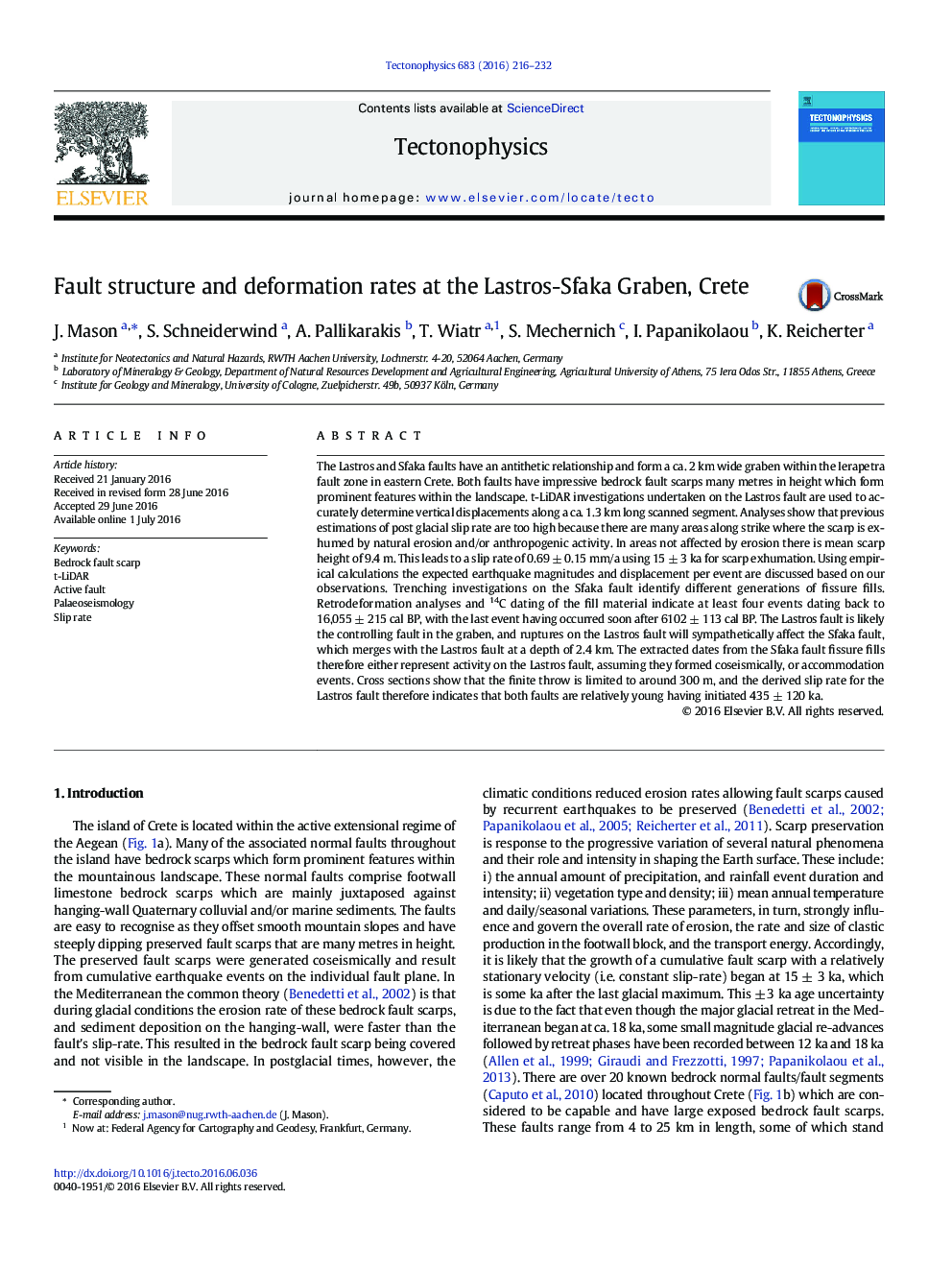| کد مقاله | کد نشریه | سال انتشار | مقاله انگلیسی | نسخه تمام متن |
|---|---|---|---|---|
| 6433379 | 1636715 | 2016 | 17 صفحه PDF | دانلود رایگان |

- The Lastros fault has a mean postglacial slip rate of 0.69 ± 0.15 mm/a using 15 ± 3 ka for scarp exhumation.
- At least four events are identified at the Sfaka fault occurring between 16055 cal BP and soon after 6102 cal BP.
- The dates from the antithetic Sfaka fault either represent coseismic activity on the Lastros fault or accommodation events.
The Lastros and Sfaka faults have an antithetic relationship and form a ca. 2 km wide graben within the Ierapetra fault zone in eastern Crete. Both faults have impressive bedrock fault scarps many metres in height which form prominent features within the landscape. t-LiDAR investigations undertaken on the Lastros fault are used to accurately determine vertical displacements along a ca. 1.3 km long scanned segment. Analyses show that previous estimations of post glacial slip rate are too high because there are many areas along strike where the scarp is exhumed by natural erosion and/or anthropogenic activity. In areas not affected by erosion there is mean scarp height of 9.4 m. This leads to a slip rate of 0.69 ± 0.15 mm/a using 15 ± 3 ka for scarp exhumation. Using empirical calculations the expected earthquake magnitudes and displacement per event are discussed based on our observations. Trenching investigations on the Sfaka fault identify different generations of fissure fills. Retrodeformation analyses and 14C dating of the fill material indicate at least four events dating back to 16,055 ± 215 cal BP, with the last event having occurred soon after 6102 ± 113 cal BP. The Lastros fault is likely the controlling fault in the graben, and ruptures on the Lastros fault will sympathetically affect the Sfaka fault, which merges with the Lastros fault at a depth of 2.4 km. The extracted dates from the Sfaka fault fissure fills therefore either represent activity on the Lastros fault, assuming they formed coseismically, or accommodation events. Cross sections show that the finite throw is limited to around 300 m, and the derived slip rate for the Lastros fault therefore indicates that both faults are relatively young having initiated 435 ± 120 ka.
Journal: Tectonophysics - Volume 683, 30 June 2016, Pages 216-232